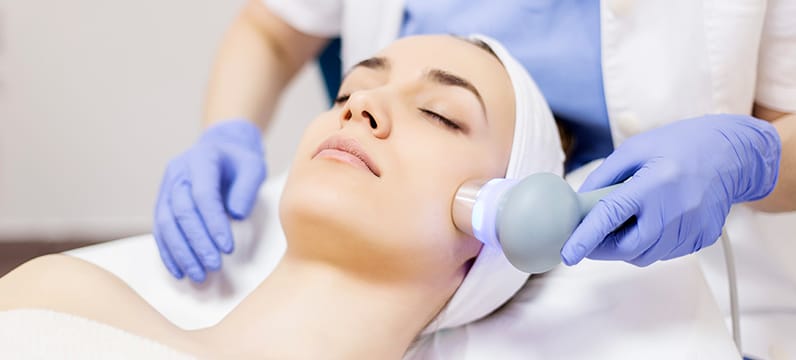Cosmetic Dermatology in South Miami, FL
Healthy, happy skin is something that everyone wants—and the less work we have to put into it, the better! But sometimes, our body has other plans, and we end up with skin that isn’t as radiant and young as it used to be. This can leave us feeling overly self-conscious and unhappy with how we look, which is no good. Thankfully, with the help of a certified and highly-accredited cosmetic dermatologist in South Miami, FL, many of those issues can be resolved within a few simple appointments.
Our experienced team of cosmetic dermatologists here at the Skin Center of South Miami has the knowledge and training to provide a wide range of cosmetic skin care services, including laser skin rejuvenation, laser hair removal, facial rejuvenation services, microdermabrasion, Botox, and injectable dermal filler treatments, among others. Our goal is to provide every patient that enters our dermatology clinic with a personalized treatment plan to get their skin looking more vibrant and youthful.
So, when you choose Skin Center of South Miami to relieve the stress that your skin may be causing you, you’re choosing a state-of-the-art dermatology center with years of experience and a history of success with countless patients all across the Greater Miami area. Plus, your dermatological needs are always our top priority, so you can rest assured that you’ll receive the utmost care and quality customer service when you arrive for your initial consultation.
What a Cosmetic Dermatologist Can Do for You
Cosmetic issues can appear in a variety of forms and in a complex range of severities. That’s why our cosmetic dermatologists here at Skin Center of South Miami specialize in the treatment of a wide array of cosmetic skin concerns to ensure that you receive the quality care that you deserve. Some of the concerns that we are able to address here include the following:
Skin Pigmentation Problems
Skin pigmentation issues, though not often cause serious health concerns, can still be jarring when they onset unexpectedly and can dramatically impact our self-perception. Whether you’re looking to do away with an old pigmented birthmark or issues that onset a bit later in life, such as melasma or pigmentation issues caused by skin damage, our team can help.
Texture Inconsistencies
There are a lot of reasons your skin may experience certain texture inconsistencies. The causes can range from fluctuating hormones and acne scars to excessive sun exposure. Whatever your unique case may be, we’ve got you covered.
Age Spots
Age spots, also known as liver spots or sun spots, are skin blemishes that can vary in size but typically remain small and often appear in groups. As the name suggests, they are most common in adults over the age of 50—however, they can also affect younger adults who’ve spent a lot of time out in the sun. Within a few dermatologist appointments here at Skin Center of South Miami, they can be easily lightened, if not entirely removed.
Wrinkles & Sagging Facial Skin
With age also comes the unfortunate reality of wrinkles and facial sagging. Sagging facial skin and a loss of facial volume can also be caused by weight loss and the reduction of collagen and elastin. However, thanks to the skilled hands of our cosmetic dermatologists in South Miami, FL, those side effects of aging weight loss can be rewound, restoring your face to a more youthful and exuberant look.
Scars
Whether your scars are from childhood roughhousing and adventurous accidents or the product of a much-needed and successful surgery, the scar tissues that form don’t have to live on your skin forever. Our team is fully capable and equipped to match the tone of your scar tissue back to your regular skin. In some cases, it may be possible to completely fix the scarring issues.
If you have any questions or don’t see your exact concerns addressed above, we would love to hear from you to find a solution to whatever cosmetic issues you’re looking to address.
Click on the buttons below to learn more about the cosmetic dermatology services we offer.
LASER REJUVENATION+
CHEMICAL PEELS+
FACIAL REJUVENATION+
MICRODERMABRASION+
BOTOX+
FILLERS+
Schedule Your Consultation Today!
For more information on our cosmetic services or to schedule a consultation, call Skin Center of South Miami today at 305-740-6181.
-
- Skin pigmentation problems
- Texture inconsistencies
- Age spots
- Wrinkles
- Sagging facial skin
- Loss of facial volume
- Scars
Click on the buttons below to learn more about the cosmetic dermatology services we offer.
Schedule Your Consultation Today!
For more information on our cosmetic services or to schedule a consultation, call Skin Center of South Miami today at 305-740-6181.
